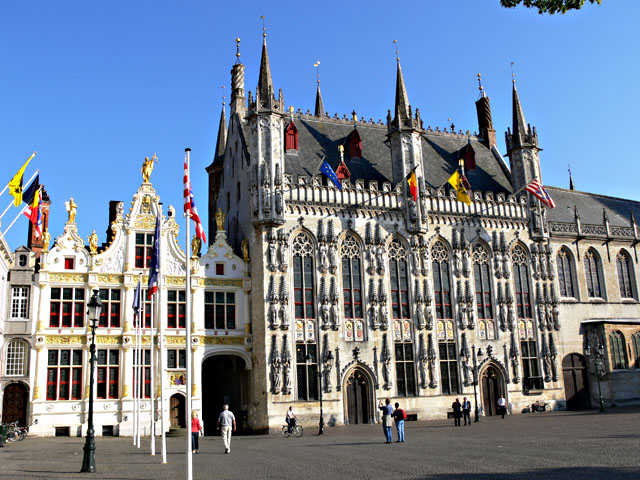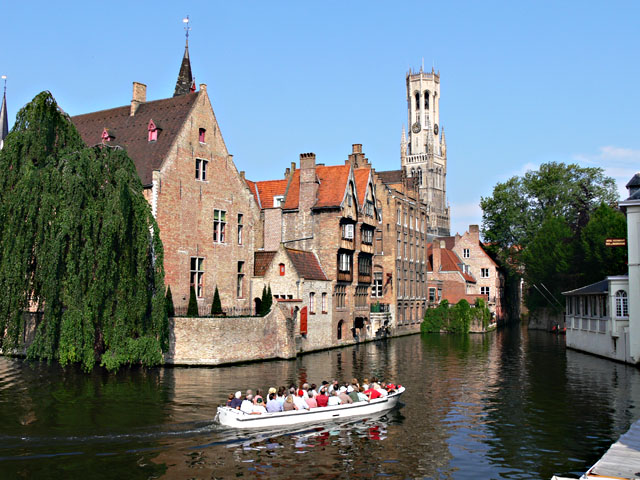
The Gothic town hall (right) and Renaissance Registry Office on Burg Square

The Gothic town hall (right) and Renaissance Registry Office on Burg Square
Brugge is a picture-postcard city. In fact, it is a city worthy of dozens of picture-postcards. Often called "the Venice of the North" for its system of canals, it was founded as a Gallo-Roman settlement in the third century and rose to prominence as an international commercial center in the 11th century.
Brugge is a city with two names in a country with two languages. Brugge is the city's name in Flemish, a language spoken in the northern provinces of Belgium, called Flanders. (In fact, "Flanders Field" is a reference to the World War I battlefield at Ieper, southwest of Brugge.) In French, the language spoken in southern Belgium, the city is called Bruges. Since Brugge is actually located in the Flemish part of the country, that is how it will be referred to here.

The 13th - 15th century Belfry on Markt Square
The famous canals were used to transport the cargo that moved through Brugge when it was a member of the Hanseatic league and one of the most heavily used North Sea ports. Cargo came down the river Zwyn on ships and was transferred to barges to move further inland by canal. Much of the beauty of the city we see today can perhaps be traced to the misfortune that befell Brugge when the Zwyn silted up so badly that it would no longer admit the ocean going vessels. This resulted in an economic stagnation in the 16th century that stalled progress and turned Brugge into a charming backwater.
Major sights include the two main squares, the Burg featuring the Gothic town hall and the Renaissance Registry (Clerk's) Office, and the Markt dominated by the Belfry, built in the 13th to 15th century. The cathedral of Notre Dame houses Michaelangelo's Madonna and Child. The 13th century Beguinage offers a glimpse into the life of the Beguines, women who dedicated themselves to a life of charitable work without taking religious vows.

A view of Brugge from the Rosary Embankment with the Belfry in the background.
But the best sight in Brugge is Brugge. Walk through the Medieval streets. Gaze at the church towers and spires. Take a canal tour. Just enjoy.

One of many canal-side restaurants.
With its reputation as one of the most beautiful cities in Europe comes the inconvenience that can result from an influx of tourists. Brugge is so popular that it can be quite crowded, especially near the primary attractions.
Brugge is located 235 KM southwest of Amsterdam, 283 KM northwest of Paris, and only 97 KM northwest of Brussels. By car, it can be reached in a bit over three hours from either Amsterdam or Paris, and in a bit over an hour from Brussels. There is also frequent train service from these cities.
Copyright 2008 Harry B. Rowe